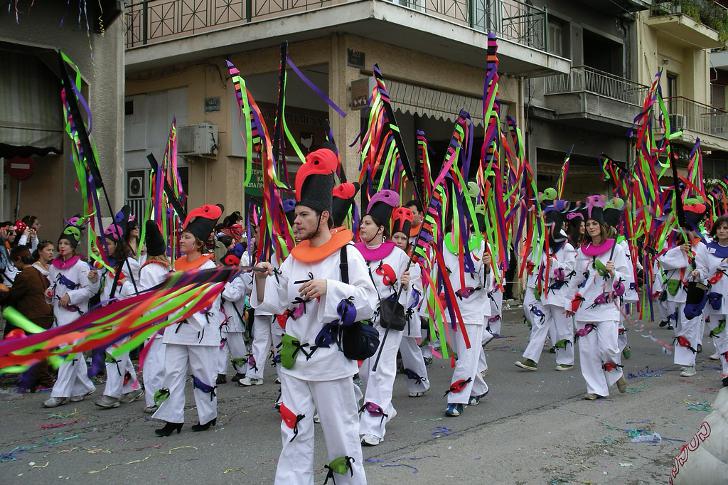Like most carnivals in the Mediterranean and the Balkans, the Patras Carnival takes its roots from ancient pagan celebrations honoring Dionysus, the Greek god of the grape harvest, winemaking and wine. These celebrations typically took place during wintertime.
However, the Patras Carnival in its modern-day form officially started in the 19th century. It is believed that the Carnival originates from a ball given by the local merchant in 1829. When Patras was liberated from Turks, French troupes stationed in the city brought their own traditions to the carnival festivities. Later on, the Carnival was also influenced by newcomers from the Ionian Islands (Heptanese) which reunited with Greece in 1864 and by the famous Carnival of Venice.
In 1872, the Apollon Theater designed by the famous Saxon architect Ernst Zeller was completed. Carnival dances have been hosted there ever since. Most carnival celebrations are held in front of the theater it the Georgiou I Square.
The Carnival of Patras typically lasts for about three weeks. It traditionally begins on January 17, the feast day of Saint Anthony the Great. The carnival season kicks off with an opening ceremony featuring an extravagantly decorated float ridden by a town crier. The crier announces the opening of the Carnival and invites the city’s residents and guests to assemble at the Georgiou I Square. The ceremony itself includes performances, an address by the mayor, and a firework display.
The Children’s Carnival is one of the highlights of the carnival season in Patras. It is held a week before the Grand Parade. The Children’s Parade features around 5,000 children from all over Western Greece. Dressed in bright costumes, they parade through the city, accompanied by cheerleading squads and marching bands.
Another major attraction of the Patras Carnival is the Treasure Hunt. During the festive season, the city’s residents form numerous groups, each group has a name and a theme for their costumes. These groups participate in the parades and the treasure hunt games, host parties, dances and public events. The groups which participate in the Treasure Hunt compete in quizzes, artistic competitions and other activities, scoring points. The team with most points wins.
The last Saturday of the Carnival is the day of the Saturday Night Parade. Originally, only groups participating in the Treasure Hunt were allowed to walk in the parade. However, today any group is free to join.
The Patras Carnival culminates on the Sunday before Clean Monday with a spectacular parade. The Grand Parade features lavishly decorated floats and an endless stream of groups. As we’ve already mentioned, each group has its own theme around which their costumes are designed. The Grand Parade has about 40,000 of participants so it can last for several hours. After the parade, the float of the Carnival King is burned. The burning is accompanied with singing, dancing and fireworks.

Photo by STELIOS KAZANTZIDHS


